Zetta Brown's Blog, page 2
June 29, 2012
"Not Your Storybook Southern Belle" - The She Writes Southern Writers 4th of July Countdown Blog Tour
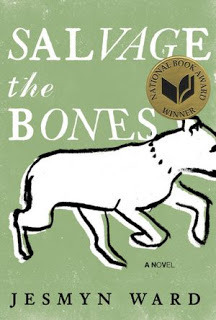 The She Writes Southern Writers 4th of July Countdown Blog Tour celebrating the Southern writers of the SheWrites community and the theme of "Southern Living" continues at The Full-Bodied (Book) Blog and guest blogger Dera Williams.
The She Writes Southern Writers 4th of July Countdown Blog Tour celebrating the Southern writers of the SheWrites community and the theme of "Southern Living" continues at The Full-Bodied (Book) Blog and guest blogger Dera Williams.Be sure to follow the tour this week! It runs from June 27-July 4.
Why? Because people who leave insightful comments on the blog post(s) during the tour will be entered into a random drawing to receive a special Southern Living-themed prize (worth $50) donated in part by me and JimandZetta.com Author/Publisher Services.
The more blogs you visit and the more comments you make throughout the tour, the more chances you get to win.
Other blogs are offering prizes too, but you have to visit them on the day and find out.
Click here for the full tour schedule.
Today Dera shares her feelings about that romanticized figure of the Southern belle with her views of the award-winning novel, Salvage the Bones: A Novel
 .
."Not Your Storybook Southern Belle"By Dera Williams
When one thinks in terms of Southern literature some of us may still have a picture of a story replete with a Southern belle; a damsel in distress, or a dainty woman girl who is surrounded by pursuant beaus, or women who are manipulative and self-centered, not unlike Scarlet O’Hara of Gone with the Wind. Most times these heroines of Southern lore are white women of means, fair maidens of acclaimed beauty, and they are known for their manipulative and contrary natures.
Yes, I have read plenty of these kinds of stories over the years. Those of us who have immersed ourselves in Southern literature have done so. Those are fun, light, “Calgon, take me away” guilty pleasures. But, I have found that the most memorable Southern heroines, the ones who stay with me and have me reflecting on the intricacies of Southern living and the complexities of the human spirit, are those women who are the furthest from your storybook Southern belle.
Enter Esch Batiste, a fourteen-year-old black girl living on the edges of poverty in Bois Savage, Mississippi on the Gulf Coast days before Hurricane Katrina in the award-winning novel, Salvage the Bones
 .
.Esch is a motherless girl-child in a household of males, including an emotionally distant father who favors the bottle. In a temporary sober state, Claude Batiste begins the task of preparing his family for the upcoming storm. Esch, as an only girl with two older brothers and a younger brother she is raising after her mother dies in childbirth, is counting cans of potted meat and bags of Top Ramen and eggs from the few chickens that the family raises in preparation for yet another storm. But her problems are much more complex and troubling. Esch is pregnant, and the father of the child might as well be nonexistent. He is an unemployed, aimless no-count, someone who comes around every once in awhile.
Esch, a lover of Greek mythology—has visions of a parallel life with Medusa—has no women models, but she dreams of a better life for herself and her unborn child. She is there for her brothers, whether she is helping second oldest Skeetah ransack a neighboring farmhouse, or helping him secure food for his beloved, prized-fighting pit bull, China. Or supporting oldest brother Randall’s dream of obtaining a basketball college scout’s eye to for a scholarship out of rural Bois Savage.
What are Esch’s dreams, goals, and plans for the future? Poor, black, disenfranchised, motherless child that she is? Dare she dream of finishing school, making a life for herself and her baby? She already has the responsibility of raising her five-year-old brother, foraging meals on a day-to-day basis, and attempting to survive in a testosterone-filled household. Esch, like most residents, think the coming storm is just another nuisance to get through. Only when it becomes clear that Hurricane Katrina is much more than anyone imagined, does the moment of truth of her circumstances become a reality.
Not a storybook Southern belle, Esch is not fortified with finances to get herself and her family out of harm’s way but must stay and endure it. But strong and determined, a steel magnolia in troubled waters, she emerges whole, determined and hopeful because that is what her mother would have wanted her to be. Knowing there is a long road to recovery, Esch, her family, and her community come together and take care of one another, and though she is still poor, still motherless, and still with child, she can see the possibilities. Not your typical storybook Southern belle, but a woman of substance.
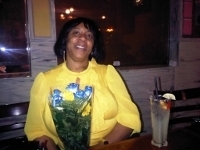 Dera Williams lives, works and plays in the Oakland/Bay Area where she has lived most of her life. She works in curriculum development at a local community college. Proud of her Southern roots, she is the family historian, a writer/editor/reviewer, and writing mentor. Her most recent publication is as co-author of
MOTHER WIT: Stories of Mothers and Daughters
Dera Williams lives, works and plays in the Oakland/Bay Area where she has lived most of her life. She works in curriculum development at a local community college. Proud of her Southern roots, she is the family historian, a writer/editor/reviewer, and writing mentor. Her most recent publication is as co-author of
MOTHER WIT: Stories of Mothers and Daughters
 . Dera is completing a Southern novel of epic proportions and working on an eBook novella. Visit her blog at http://www.derarwilliams.blogspot.com
. Dera is completing a Southern novel of epic proportions and working on an eBook novella. Visit her blog at http://www.derarwilliams.blogspot.comVisit today's next stop on the She Writes Southern Writers 4th of July Countdown Blog Tour:
Visit Melanie Pennington's blog, Musings & Meanderings: Thoughts on Life and Healing and read her post "The Flavors of My Childhood"
And don't forget to visit yesterday's stops:
"Evolution AND Creationism: The Birth of a Southern Novel" by Ramey Channell
"Hospitality, Welcome to the South" by Charity Bradford
Published on June 29, 2012 03:46
June 21, 2012
The She Writes Southern Writers 4th of July Countdown Blog Tour
 The Southern Writers of She Writes cordially invite you to The She Writes Southern Writers 4th of July Countdown Blog Tour.
The Southern Writers of She Writes cordially invite you to The She Writes Southern Writers 4th of July Countdown Blog Tour.The purpose of this tour was to give as many of the members in the Southern Writers group a chance to offer their hospitality by having others visit their home blogs.
During the week leading up to the 4th of July, twoblogs will be featured every day sharing their interpretation of the tour’s theme: “Southern Living.”
People who leave insightfulcomments on the blog post(s) during the tour will be entered into a random drawing to receive a special Southern Living-themed prize (worth $50) donated by Zetta Brown and JimandZetta.com Author/Publisher Services.
The more blogs you visit and the more comments you make throughout the tour, the more chances you get.
It would be nice to turn this into an annual event if interest warrants so come on out!
Tour Date: Wed. June 27Blog Name: Sweet Music on Moonlight RidgeBlog Owner: Ramey ChannellTitle: "Evolution AND Creationism: The Birth of a Southern Novel"URL: www.sweetmusiconmoonlightridge.blogspot.com
Tour Date: Wed. June 27Blog Name: My Writing JourneyBlog Owner: Charity BradfordTitle: "Hospitality, Welcome to the South"URL: http://charitywrites.blogspot.com
Tour Date: Th. June 28Blog Name: Ruminations and ReflectionsBlog Owner: Rebecca ElswickGuest Blogger: Natalie Parker-LawrenceTitle: "Patrice Melnick: Louisiana Poet, Festival Muse"URL: http://wwwrebeccaelswick.blogspot.com
Tour Date: Th. June 28Blog Name: Holly's Narrative DreamBlog Owner: Holly Raychelle HughesTitle: "Pictures and Words"URL: www.writerhughes.wordpress.com
Tour Date: Fri. June 29Blog Name: Musings & Meanderings: Thoughts on Life and HealingBlog Owner: Melanie PenningtonTitle: "The Flavors of My Childhood"URL: http://musingsandmeanderings-mlp.blogspot.com/
Tour Date: Fri. June 29Blog Name: The Full-Bodied (Book) BlogBlog Owner: Zetta BrownGuest Blogger: Dera WilliamsTitle: "Not Your Storybook Southern Belle"URL: http://fullbodiedbooks.blogspot.co.uk/
Tour Date: Sat. June 30Blog Name: Delani Bartlette’s Travel BlogBlog Owner: Delani BartletteGuest Blogger: Stacy AllenTitle: "Changing The Past, Inventing The Future"URL: http://matadornetwork.com/community/delanib
Tour Date: Sat. June 30Blog Name: Emily Kennedy, AuthorBlog Owner: Emily KennedyTitle: "Southern Gentlemen"URL: http://emilykennedyauthor.com
Tour Date: Sun. July 1Blog Name: Ryder Islington, AuthorBlog Owner: Ryder IslingtonGuest Blogger: Deidre Ann Banville Title: "New Orleans Caulbearers"URL: http://ryderislington.wordpress.com
Tour Date: Sun. July 1Blog Name: A Penny and ChangeBlog Owner: Penny LeischGuest Blogger: Trisha FayeTitle: "Change...as the moon goes on shining"URL: http://apennyandchange.pennyleisch.com/blog
Tour Date: Mon. July 2Blog Name: Zetta's House of Random ThoughtsBlog Owner: Zetta BrownTitle: "Texas Tornadoes and Other Memories"URL: http://zettashouse.wordpress.com
Tour Date: Mon. July 2Blog Name: Reflections of a Mississippi MagnoliaBlog Owner: Patricia DorseyTitle: "A (Southern) Life in Poems"URL: http://patricianeelydorsey.blogspot.com/
Tour Date: Tue. July 3Blog Name: A Penny's WorthBlog Owner: Penny LeischGuest Blogger: NancyKay Sullivan WessmanTitle: "Books & Business & Reality: No magic bullet"URL: http://pennyleisch.com/wordpress
Tour Date: Tue. July 3Blog Name: The NoveletteBlog Owner: Laura GschwandtnerTitle: "Southern Living with True Grit"URL: http://thenovelette.com/blog
Published on June 21, 2012 09:10
June 18, 2012
Nourishing the Body and the Spirit - by Ellen Frankel
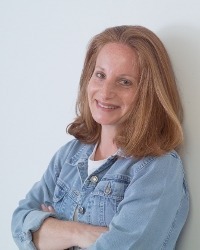 My tribute to Pearlsong Press this weekconcludes with a guest post from author
Ellen Frankel, LCSW
. Ellen worked in the field of eating disorder treatment and prevention for over fifteen years. In addition to her latest book, Syd Arthur
My tribute to Pearlsong Press this weekconcludes with a guest post from author
Ellen Frankel, LCSW
. Ellen worked in the field of eating disorder treatment and prevention for over fifteen years. In addition to her latest book, Syd Arthur (Pearlsong Press, 2011), Ellen is the author of Beyond Measure: A Memoir About Short Stature and Inner Growth
(Pearlsong Press, 2011), Ellen is the author of Beyond Measure: A Memoir About Short Stature and Inner Growth (Pearlsong Press, 2006) and the co-author of The Diet Survivor's Handbook: 60 Lessons in Eating, Acceptance and Self-Care
(Pearlsong Press, 2006) and the co-author of The Diet Survivor's Handbook: 60 Lessons in Eating, Acceptance and Self-Care (Sourcebooks, 2006) and Beyond a Shadow of a Diet: The Therapist's Guide to Treating Compulsive Eating Disorders
(Sourcebooks, 2006) and Beyond a Shadow of a Diet: The Therapist's Guide to Treating Compulsive Eating Disorders (Brunner-Routledge, 2004). She is also the co-author with Rabbi Baruch HaLevi of the forthcoming book, Revolution of Jewish Spirit: How to Revive Ruakh in Your Spiritual Life, Transform your Synagogue and Inspire Jewish Community (Jewish Lights, 2012). Ellen is now an empty nester, but happily for her, both her daughter and her son have accepted her friend request on Facebook.
(Brunner-Routledge, 2004). She is also the co-author with Rabbi Baruch HaLevi of the forthcoming book, Revolution of Jewish Spirit: How to Revive Ruakh in Your Spiritual Life, Transform your Synagogue and Inspire Jewish Community (Jewish Lights, 2012). Ellen is now an empty nester, but happily for her, both her daughter and her son have accepted her friend request on Facebook.Comment on this post for a chance at winning copies of the Syd Arthur & Beyond Measure ebooks. A winner will be randomly chosen from among the comments made on this post. This offer is valid until midnight EST, Tuesday June 19, 2012.


Nourishing the Body and the Spiritby Ellen Frankel
Imagine the explosion of creative energy that would be released if women stopped dieting and instead began living out their passions and gifts. Thoreau said, "Go confidently in the direction of your dream—live the life you imagine." He didn't say, "Go confidently in the direction of your dream—life the life you imagine after you attain your ideal weight."
Countless Americans believe that the more weight they lose, the happier they will become. I wrote my novel, Syd Arthur
 , with that theme in mind.
, with that theme in mind. Syd Arthur
 is a modern day version of the journey of the historical Buddha, born Prince Siddhartha, from a life of extravagance within palace walls to attaining enlightenment. After becoming known as the Buddha, which means “one who is awake,” the Buddha spent the rest of his life teaching that all have the potential to awaken.
is a modern day version of the journey of the historical Buddha, born Prince Siddhartha, from a life of extravagance within palace walls to attaining enlightenment. After becoming known as the Buddha, which means “one who is awake,” the Buddha spent the rest of his life teaching that all have the potential to awaken. My story begins 2,500 years later in the cloistered world of suburbia.
Syd Arthur is a middle-aged Jewish woman who is potentiallyawake, but likes to start her day with a strong cup of coffee, just in case. Like many women, Syd believes her happiness will ultimately be found by a magic number on the bathroom scale. She spends enormous amounts of time and energy jumping from one diet to the next in search of her version of Nirvana—a smaller dress size.
When a tragic accident in her town stirs up long buried pain, Syd, newly empty-nested, begins to question where she is in her life and what she wants for her future. When East expectedly meets West, she embarks on a journey as a spiritual seeker. Soon she’s in over her chakras as her spiritual search takes her from yoga studio to meditation hall to ashram gift store to the pages of Zensational catalogue. Her friends insist it’s merely a mid-life crisis, but Syd realizes she must truly let go to truly let in if she is ultimately to travel back to herself.
One of the main things Syd has to let go of is the idea that she will find happiness in weight loss and in the external versus the internal world. At one point in the novel, she has the following insight:
I have been a seeker all my life, I realize, but a seeker of external perfection: searching for the perfect outfit, praying for the perfect diet, making my house a shrine to contemporary living. But when I die, what will people say about my life? I can just picture Jodie's eulogy at my funeral:
"Syd was taken from us suddenly, going into cardiac arrest wearing a darling size four Burberry tweed suit and carrying a fabulous Birkan bag. Syd would have been happy to know that she died on one of her "thin" days, and thus will remain svelte into perpetuity. She maintained a spotless house and, thanks to her wonderful housekeeper Marina, barely had to lift a perfectly polished finger to do so. Syd was my best friend, and she can never be replaced. Though we will need to find a new fourth for our Mah Jongg group. We play on Thursday nights and if anyone here is interested, please see me after the burial."
Ultimately Syd discovers her own inner truth and wisdom on both physical and spiritual levels. In letting go of dieting, Syd follows the words of Lin Chi, a famous Zen master: “When hungry, eat your rice. When tired, close your eyes. Fools may laugh, but wise men will know what I mean.”
Syd’s modern-day spiritual search leads readers on a journey toward greater compassion for oneself and others, showing us that at the center of our bliss is a richness that rivals a Godiva truffle, making enlightenment thoroughly delicious.
Published on June 18, 2012 06:00
June 17, 2012
Big Girls Don’t Have to Cry! The Rise of the "Curvier" Girl in Romantic Fiction
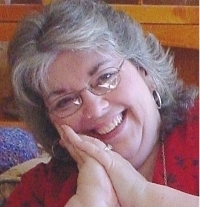 Pearlsong Press Weekcontinues with a guest post from author
JudyBagshaw
who has been published with several small electronic presses since 2000. Writing romance generally featuring full-figured heroines, her publishing credits include several novels, a collection of short stories, and short stories in multiple anthologies. She was also part of the writing team for the Ginn Reading Series and Reaching Readers Series used in many elementary schools. Retired from teaching, she writes full-time from her home in Southern Ontario, Canada. Visit Judy's website at www.judybagshaw.com.
Pearlsong Press Weekcontinues with a guest post from author
JudyBagshaw
who has been published with several small electronic presses since 2000. Writing romance generally featuring full-figured heroines, her publishing credits include several novels, a collection of short stories, and short stories in multiple anthologies. She was also part of the writing team for the Ginn Reading Series and Reaching Readers Series used in many elementary schools. Retired from teaching, she writes full-time from her home in Southern Ontario, Canada. Visit Judy's website at www.judybagshaw.com.Comment on this post for a chance to win a copy of the ebook At Long Last, Love, the short story collection published by Pearlsong Press. A winner will be randomly chosen from comments made on this post. This offer is valid until midnight EST, Tuesday June 19, 2012.
Big Girls Don’t Have to Cry!The Rise of the "Curvier" Girl in Romantic Fictionby Judy Bagshaw
A quick perusal of the covers of romance novels in your local bookstore will reveal the traditional romance novel heroine—small, willowy, narrow-waisted, somewhat buxom, with long, flowing hair. Behind or beside her will stand the standard hero—tall, muscular, sporting six-pack abs and dark, brooding, impossibly good looks. Heroes and heroines have always been portrayed thus, it seems. But over the past dozen years a new kind of heroine has emerged—the curvy girl.
I've always been a curvy girl myself—full-figured, a BBW (Big Beautiful Woman), zaftig, rubenesque, whatever euphemism you wish to use—that's me. When I began to write with the goal of being published, I made the decision to write heroines like me—large and in charge, living life to the max and making no apologies for it.
At one point I had a writing instructor, a former editor for Harlequin, tell me that romance stories with full-figured heroines would never find a publisher. There was just no market for them. Although disheartened somewhat by his words, a part of me held on to the belief that there was such a market—that women were ready for a different kind of heroine, one who reflected them.
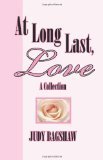
 I, and a slew of other like-minded writers, have been proven right! I am finding that in the world of electronic publishing particularly there is a growing interest in books, stories and magazines for and about large-sized people. It seems that where the traditional large press houses have turned a blind eye, the electronic world is opening their arms. And the big boys are starting to pay attention. At the risk of being "punny," it's a growing market!
I, and a slew of other like-minded writers, have been proven right! I am finding that in the world of electronic publishing particularly there is a growing interest in books, stories and magazines for and about large-sized people. It seems that where the traditional large press houses have turned a blind eye, the electronic world is opening their arms. And the big boys are starting to pay attention. At the risk of being "punny," it's a growing market!My fan mail certainly supports my belief that there is a market for this kind of fiction. Many women have written to express how pleased they are to see themselves represented in romance novels. I've had women, with great emotion, thank me for giving them a new way to look at themselves and their lives. I constantly get notes in my website guestbook expressing excitement to have found a site like mine.
Current statistics place 75 percent of the US population over age 20 as being “overweight.” This is a significant segment of the purchasing population who deserve to be represented in print in positive and enlightening ways. This is a group that, as yet, is vastly under-represented.
As a writer, I love the fact that I am writing stories that are filling this need—that present an alternative to the traditional "formulaic" romance novel. I love that I can follow my passion and gain acceptance for my work without compromising it—thinning it down, so to speak. I am excited by the rise of the curvier girl in contemporary romantic fiction. May she blossom and thrive!
Published on June 17, 2012 00:30
June 16, 2012
Curvy Girls Look at Life: Off-kilter Bodies Cause Funny Looks As Well As Pain
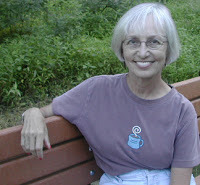 Pearlsong Press Weekcontinues with a guest post from author Linda C. Wisniewski. Linda is the author of Off Kilter: A Woman's Journey to Peace with Scoliosis, Her Mother, and Her Polish Heritage
Pearlsong Press Weekcontinues with a guest post from author Linda C. Wisniewski. Linda is the author of Off Kilter: A Woman's Journey to Peace with Scoliosis, Her Mother, and Her Polish Heritage . She teaches adult education memoir classes and speaks on the healing power of writing.
. She teaches adult education memoir classes and speaks on the healing power of writing.Comment on this post for a chance to win a copy of the ebook version of Off Kilter published by Pearlsong Press. A winner will be randomly chosen from comments made on this post. This offer is valid until midnight EST, Tuesday June 19, 2012.
Curvy Girls Look at Life: Off-kilter Bodies Cause Funny Looks As Well As Painby Linda C. Wisniewski
Remember that scoliosis check from your school days? You line up in a row, take off your shirt for the school nurse and bend over while she inspects you from the back. Could be humiliating, definitely causes nervous laughter before you go back to class. But what if you get a letter to take home saying you might have scoliosis?
The sideways curvature commonly known as adolescent idiopathic scoliosis has no known cause, although research has located the gene responsible for it. If you’re as lucky as I was when diagnosed, you won’t need surgery or a back brace. My curve hasn’t gotten worse over the years since I was diagnosed at 14. But at 65, I can tell you about a lifetime of self-esteem issues related to my “deformed” look and the difficulty of finding clothes that “hang right.”

 After reading my memoir, Off Kilter
After reading my memoir, Off Kilter , which uses my scoliosis as a metaphor for my life, friends have said they never knew that I had scoliosis. My mother worried about the scoliosis more than I did. She sewed all my clothes and taught me never to tuck in my shirt and never to wear a belt.
, which uses my scoliosis as a metaphor for my life, friends have said they never knew that I had scoliosis. My mother worried about the scoliosis more than I did. She sewed all my clothes and taught me never to tuck in my shirt and never to wear a belt. When I got married, I had my bridal gown altered so the row of buttons up my back would hang straight while I stood before the minister with my back to the wedding guests.
Once I wore a favorite dress to church and decided, against Mom’s advice, to wear the belt that came with it. A friend asked if I had scoliosis, then said, “Don’t ever wear that dress again.” I was shocked speechless. What was so offensive about my curve?
Many years later I taught a memoir class for older adults, one of whom was a retired fashion model. She pulled up the shoulder of my jacket and said, “All you need is a shoulder pad on this side and the jacket will hang perfectly.” I thanked her, but all the way home the confidence I felt in class, teaching my students what I know about writing, seeped out as though my psyche was a punctured balloon. By the time I got home I was angry. What right did she have to correct my appearance—to touch me like that? What is so offensive about an off-kilter body that women, especially, want us to correct it?
There is some physical pain associated with an aging, curvy spine, and I do Pilates, yoga and daily walks to keep it under control. But the psychic pain when one is told the way you look is in need of correction—that’s not easy to live with.
And I’m not alone.
One grown woman with scoliosis recalls her middle school years: “I was harassed so much in the locker room my first year of middle school that I refused to change my clothes at all. P.E. was a living nightmare full of verbal attacks and physical threats from larger girls.”
And even if a brace can correct the curve, there’s a body image issue: “The brace was something to be hidden. Girls that age don’t want to be seen in a brace. For photos, they’ll take off the brace. If they’re told to wear it to school, they’re mocked and stared at.”
Clinical studies have shown that “Scoliosis was an independent risk factor for suicidal thought, worry and concern over body development, and peer interactions after adjustment.”
Sometimes the curve is successfully hidden under clothes until the day it is exposed: “People have known me for years, even decades, without knowing I had scoliosis. Then one day they’ll see me in a bathing suit—and they’ll burst out with something like, ‘OH MY GOD DID YOU KNOW SOMETHING IS REALLY WRONG WITH YOUR SPINE!!’”
As women (most scoliosis patients are female), we are judged for our figures, and sometimes overhear “she should have had that corrected.” A doctor who was examining me for a GI problem asked why I hadn’t had surgery to straighten my spine. But the surgery fuses the spine and limits flexibility. And sometimes it doesn’t work.
As one woman commented when people asked her why she “walked funny,” “The way I walk is just the way I walk. It gets me where I need to go.”
I’m not sure what the future will bring for this aging, curvy girl, but I’ll be wearing whatever I want, thank you.
=========Sources quoted in this post:http://www.ncbi.nlm.nih.gov/pubmed/9201842%20http://atlasien.blogspot.com/2009/10/sex-and-scoliosis.htmlhttp://www.scoliosis.org/info.phphttp://www.iscoliosis.com/causes.html#
Published on June 16, 2012 00:30
June 15, 2012
The Road to Fatropolis
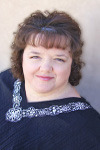 Pearlsong Press Weekcontinues with a guest post from author Tracey L. Thompson who was born and raised in southern California and now resides in northern Virginia. Find out more about Fatropolis at www.pearlsong.com/fatropolis.htm.
Pearlsong Press Weekcontinues with a guest post from author Tracey L. Thompson who was born and raised in southern California and now resides in northern Virginia. Find out more about Fatropolis at www.pearlsong.com/fatropolis.htm.Comment this post and have a chance of winning an electronic galley (PDF proof) of Tracey’s forthcoming novel Fatropolis. A winner will be randomly chosen from comments made on this post. This offer is valid until midnight EST, Tuesday June 19, 2012.
The Road to Fatropolisby Tracey L. Thompson
My life was changed by a book.When I was 12 years old, in 1977, I wasn’t fat, but I certainly didn’t have thin ankles and a flat stomach like my friends. When I started having strange episode of dizziness my mother took me to the doctor, who promptly put me on diet pills—amphetamines. I didn’t take them for long because of the way they made me feel. But that doctor’s visit was a validation that there was something wrong with my body. I was in junior high and I desperately wanted to be thin. I started dieting. I lost and gained the same 20 pounds over and over.
 I got married and gained huge amounts of weight with my pregnancies. I so longed to be able to buy into commercial diet programs, but didn’t have the money. I thought that if only I could eat just what I was allotted per day, all my problems would be solved. I tried Overeaters Anonymous. Instead of abstaining from eating compulsively I was encouraged by my sponsor to “abstain” from sugar for nine months because “sugar is what causes us to binge eat.” I binged on honey- or fructose-sweetened cookies instead. I didn’t lose any weight, but I felt like I was really doing something.When I divorced, the Atkins Diet was all the rage. I lost weight—at least 40 pounds—and got down to 220, but after nine months of low-carb eating, I didn’t care what I looked like anymore, I just wanted to eat something good. So I promptly gained back all the weight and eventually ended up at 295. Through all of these years, one thing held constant— I hated my body—and myself for being so weak and having “no will power.” This hatred made me buy an expensive gym membership, where I took out that hatred on my body, torturing myself with intermittent long workouts that left me sore for days, which in turn discouraged me from exercising, which made me torture myself more.
I got married and gained huge amounts of weight with my pregnancies. I so longed to be able to buy into commercial diet programs, but didn’t have the money. I thought that if only I could eat just what I was allotted per day, all my problems would be solved. I tried Overeaters Anonymous. Instead of abstaining from eating compulsively I was encouraged by my sponsor to “abstain” from sugar for nine months because “sugar is what causes us to binge eat.” I binged on honey- or fructose-sweetened cookies instead. I didn’t lose any weight, but I felt like I was really doing something.When I divorced, the Atkins Diet was all the rage. I lost weight—at least 40 pounds—and got down to 220, but after nine months of low-carb eating, I didn’t care what I looked like anymore, I just wanted to eat something good. So I promptly gained back all the weight and eventually ended up at 295. Through all of these years, one thing held constant— I hated my body—and myself for being so weak and having “no will power.” This hatred made me buy an expensive gym membership, where I took out that hatred on my body, torturing myself with intermittent long workouts that left me sore for days, which in turn discouraged me from exercising, which made me torture myself more.

 Then a friend gave me a book called
When Women Stop Hating Their Bodies: Freeing Yourself from Food and Weight Obsession
Then a friend gave me a book called
When Women Stop Hating Their Bodies: Freeing Yourself from Food and Weight Obsession
 , by Jane Hirschmann and Carol Munter, and it changed my life forever. I started to see that we (especially women) are conditioned from an early age to be dissatisfied with our bodies. I started to see the truth in my past. All the yo-yo dieting I had done, trying to be the ideal female, had done nothing for me except make me fatter. I believe that if I had been able to accept and love my body when I was that innocent 12-year-old girl that my weight would have never fluctuated more than 20 to 30 pounds. I learned to “legalize” food, and to stop using it as a warm blanket of love or avoid it out of shame or fear. Of course I’ve had my struggles and setbacks over the years, but I’m much more happy in my own skin now than I was when I was a size 10. I don’t weigh myself anymore, and I wear clothes that are comfortable and that fit me. I try not to get hung up on the size, and I treat myself with love and respect. Wow, have I come a long way! In 1999 I had a vision of a fat young woman who falls through a portal into another world where fat people are the beautiful ones and all the cultural norms surrounding size and weight are opposite to what we are taught. While in a period of unemployment 10 years after the vision, I began writing that story. Today I have four grown children and a seven-year-old, two lovely granddaughters, my husband and I have been married for 11 years, I have earned a master’s degree, and I now have a satisfying career as a social worker. And thanks to Pearlsong Press, my vision, my novel
Fatropolis
, will be published in November. I may not ever be thin, but I love myself regardless of what size or weight I am. Come visit
Fatropolis
and see what it’s like for big people to lead happy, guilt-free lives.
, by Jane Hirschmann and Carol Munter, and it changed my life forever. I started to see that we (especially women) are conditioned from an early age to be dissatisfied with our bodies. I started to see the truth in my past. All the yo-yo dieting I had done, trying to be the ideal female, had done nothing for me except make me fatter. I believe that if I had been able to accept and love my body when I was that innocent 12-year-old girl that my weight would have never fluctuated more than 20 to 30 pounds. I learned to “legalize” food, and to stop using it as a warm blanket of love or avoid it out of shame or fear. Of course I’ve had my struggles and setbacks over the years, but I’m much more happy in my own skin now than I was when I was a size 10. I don’t weigh myself anymore, and I wear clothes that are comfortable and that fit me. I try not to get hung up on the size, and I treat myself with love and respect. Wow, have I come a long way! In 1999 I had a vision of a fat young woman who falls through a portal into another world where fat people are the beautiful ones and all the cultural norms surrounding size and weight are opposite to what we are taught. While in a period of unemployment 10 years after the vision, I began writing that story. Today I have four grown children and a seven-year-old, two lovely granddaughters, my husband and I have been married for 11 years, I have earned a master’s degree, and I now have a satisfying career as a social worker. And thanks to Pearlsong Press, my vision, my novel
Fatropolis
, will be published in November. I may not ever be thin, but I love myself regardless of what size or weight I am. Come visit
Fatropolis
and see what it’s like for big people to lead happy, guilt-free lives.
Published on June 15, 2012 06:00
June 14, 2012
Stereotyping—In Fact & Fiction
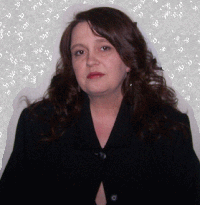 Pearlsong Press Weekcontinues with a guest post from author
Lauri J Owen
. Lauri is a civil rights author who grew up in Idaho’s Treasure Valley. She started reading fantasy novels in the third grade, and other than taking time out to sleep, never really stopped. She worked in law enforcement for more than a decade before becoming an attorney. After completing U.C. Berkeley’s law school she moved to the Alaska Bush, where she fell in love with the magic and majesty that exemplifies her new home state. She is the author of the paranormal romance novels
Fallen Embers
Pearlsong Press Weekcontinues with a guest post from author
Lauri J Owen
. Lauri is a civil rights author who grew up in Idaho’s Treasure Valley. She started reading fantasy novels in the third grade, and other than taking time out to sleep, never really stopped. She worked in law enforcement for more than a decade before becoming an attorney. After completing U.C. Berkeley’s law school she moved to the Alaska Bush, where she fell in love with the magic and majesty that exemplifies her new home state. She is the author of the paranormal romance novels
Fallen Embers
 and
Blowing Embers
and
Blowing Embers
 , Books 1 and 2 of The Embers Series, available in original trade paperback and ebook from
Pearlsong Press
.
, Books 1 and 2 of The Embers Series, available in original trade paperback and ebook from
Pearlsong Press
.Comment on this post for a chance to win the ebooks Fallen Embers
 and Blowing Embers
and Blowing Embers . A winner will be randomly chosen from the commenters. This offer is valid until midnight EST, Tuesday June 19, 2012.
. A winner will be randomly chosen from the commenters. This offer is valid until midnight EST, Tuesday June 19, 2012.Stereotyping—In Fact & Fiction
by Lauri J Owen
What’s a plus-sized woman with a brown belt in Tai Kwon-do get?
Anything she wants.
Don’t laugh. That’s not a joke.
Or maybe you didn’t laugh. Maybe instead you stopped there, somewhere hip deep inside that first sentence, and wondered how a fat woman ever managed to earn a martial arts belt.
If you did, don’t feel bad. We do that all the time. It’s called stereotyping. We do it because we share the planet with billions of other people, and we’re busy, and sometimes it’s because they’re different and we’re scared of them—though frankly I think we do it because it’s easier than examining the facts of every single situation and every person we meet.
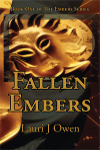 The problem, of course, happens when we start accepting those generalizations as Truth. Not truth—little “t,” as in “sometimes this appears to be a trend”—but as Truth—big “T,” as in “God proclaimed it from the mountain and it is always, always, always true.”
The problem, of course, happens when we start accepting those generalizations as Truth. Not truth—little “t,” as in “sometimes this appears to be a trend”—but as Truth—big “T,” as in “God proclaimed it from the mountain and it is always, always, always true.”Well, even the most cursory of examinations show that of course any stereotype is never true all the time (and sometimes it isn’t true at all). Take fat—being fat—for instance. Lazy. Never exercise. Eat nothing but fast food. Get diabetes. Have lots of heart attacks. Lonely. Unliked. Unhealthy.
(For instance see http://www.bellaonline.com/articles/art58211.asp and http://www.npr.org/2011/08/08/138958386/big-fat-stereotypes-play-out-on-the-small-screen.)
 I write books about a plus-sized heroine who is also belted in Tai Kwon-do (which, not coincidentally, are two things she and I share) who goes on a rollicking, romantic adventure. Recently on a review web site someone rated my book very poorly, which happens sometimes because we all have different tastes, but in this case, the only criticism the woman had for my stories is that my heroine is “quite overweight” and yet engages in martial arts. “It is fantasy, I guess,” she finally concludes.
I write books about a plus-sized heroine who is also belted in Tai Kwon-do (which, not coincidentally, are two things she and I share) who goes on a rollicking, romantic adventure. Recently on a review web site someone rated my book very poorly, which happens sometimes because we all have different tastes, but in this case, the only criticism the woman had for my stories is that my heroine is “quite overweight” and yet engages in martial arts. “It is fantasy, I guess,” she finally concludes.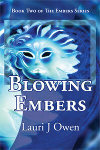 I am offended, but not because this woman didn’t like my books. What gets me is how easily this woman accepts that fat women can’t punch or high kick. And how many other readers thought the same?Sure, sure. Some fat women can’t do martial arts. But then lots of skinny women can’t, either.
I am offended, but not because this woman didn’t like my books. What gets me is how easily this woman accepts that fat women can’t punch or high kick. And how many other readers thought the same?Sure, sure. Some fat women can’t do martial arts. But then lots of skinny women can’t, either.Many of us read books because we want to escape. We want to ensconce ourselves deep inside a world where the good gals win, the gal gets her guy, and justice will prevail. During our journey we don’t often want to dive too deeply inside society’s trash troves in search of Truth, which is, I think, why stereotypes prevail so weightily inside pop fiction.
 We have to take a look, though, my friends, at fat stereotypes, because more than half of us are fat, and when we believe in untruth, we mislead and even hurt ourselves. I’m no sociologist, but I think our fear of fat is tied to the empowerment of women in particular. Regardless of where this comes from though, we need to stop. Or at least slow way down.
We have to take a look, though, my friends, at fat stereotypes, because more than half of us are fat, and when we believe in untruth, we mislead and even hurt ourselves. I’m no sociologist, but I think our fear of fat is tied to the empowerment of women in particular. Regardless of where this comes from though, we need to stop. Or at least slow way down. Being fat doesn’t automatically translate into being lazy, or being unhealthy, or eating fast food. Or any other of those thinking shortcuts.
Excavate them. That’s my advice. Then take the time to reexamine what you think about being fat. Research your conclusions, and make a commitment to do the same in a year.
Meh. This is really all about me. And you know what? I’m a fat girl who’s always wanted more.
And now that I’m belted in TKD, I’ve got it.
Published on June 14, 2012 06:00
June 13, 2012
Watching Our Language
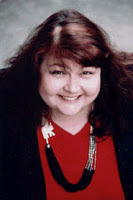 Pearlsong Press Week continues with a guest post from author
Lynne Murray
. Lynne is the author of
The Falstaff Vampire Files
Pearlsong Press Week continues with a guest post from author
Lynne Murray
. Lynne is the author of
The Falstaff Vampire Files
 ,
Bride of the Living Dead
,
Bride of the Living Dead
 and the award-winning Josephine Fuller, sleuth of size, mystery series. Her humorous essays, interviews and reviews have appeared in magazines and newspapers. She lives in San Francisco.
and the award-winning Josephine Fuller, sleuth of size, mystery series. Her humorous essays, interviews and reviews have appeared in magazines and newspapers. She lives in San Francisco.
Comment on this post for a chance to win an ebook of the Lynne Murray novel of your choice (The Falstaff Vampire Files, Bride of theLiving Dead, Larger Than Death, and Large Target are currently available in ebook form from Pearlsong Press). This offer is valid until midnight EST, Tuesday June 19, 2012.
Watching Our Language by Lynne Murray
Thanks to Zetta Brown and The Full-Bodied (Book) Blog for allowing me to rant on my favorite topic!
My own journey in writing books about people who don’t apologize for their size came when I read one fat joke too many in a novel.
Recently a friend who knows I value positive, fat characters in fiction recommended A Good American by Alex George because the two romantic leads were large. But both of us were surprised by how vehemently I hated the way the characters were described.
The book’s hero and heroine shamelessly accept their abundant flesh and engage in romantic passion without inhibition, but the author spoiled the story for me with his palpable disgust in describing the characters’ bodies. (I’ll deal with the fact that he was trying to be funny a little later.)
On page one the heroine appears, “6 feet tall, and robustly built,” walking in a fashionable public garden in Germany in the 1800s. So far, so good. The author says she “clomped briskly” down the path unlike the mincing steps of fashionable ladies of her class. Uh-oh.
The heroine moves freely, refusing to wear a corset, which is good, but the author describes her “voluminous dresses that draped her outsized form like colorful tents.” Here I seriously started to lose patience with the book.
The hero admires the heroine from afar. Determined to woo her, he hides behind a bush and greets her by singing an operatic aria with a voice “as pure and clear as a freshly struck bell.” Then the suitor emerges from the shrubbery and presses a bouquet into the heroine’s “big, sweaty” hands.
The singer is revealed to be a match for the heroine in size—even taller, and possessing “a quivering gut of heroic dimensions that he made no attempt to hide.” Note the rude slap of the word “gut” and the ironic use of “heroic,” and how the author ratchets up the prejudice with the word “quivering.”
 Allow me to demonstrate how to speak of an abundant belly without disgust. In my novel
The Falstaff Vampire Files
Allow me to demonstrate how to speak of an abundant belly without disgust. In my novel
The Falstaff Vampire Files
 , the lead character speaks about how his size has remained the same since he became a vampire:
, the lead character speaks about how his size has remained the same since he became a vampire:“The belly that I forged in life leads the way still like the prow of a ship, identical to the day I died these many—ahem! I shall not say how many centuries ago.”http://www.pearlsong.com/thefalstaffvampirefiles.htm
George managed to alienate me from his self-accepting fat characters because of his constant sarcastic comments on their bodies. Later, when the romantic duo consummate their relationship, he feels the need to suggest that they might break the bed. Really? An outright fat joke?
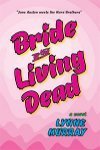 Again, let me suggest that even when you have a small bed and two large people, you can be funny without sneering. Herewith from my romantic comedy,
Bride of the Living Dead
Again, let me suggest that even when you have a small bed and two large people, you can be funny without sneering. Herewith from my romantic comedy,
Bride of the Living Dead
 :
:The nearest privacy was my garage apartment on Anza. Within seconds of hitting the door we stretched out on the twin mattress and box springs formerly occupied by Mr. Yamazaki's mom. It seemed impossibly small with the two of us lying on it, the springs creaking as we wiggled around, slowly discarding one garment after another. Then we both froze when we heard a few words in Japanese spoken a few feet away. It came from the other side of the wall, of course. Oscar and I both held our breath as we heard a clatter of shoes on the garden path and a click of garden shears. The Yamazakis had come out to tend the bonsai trees just outside my window in the back yard. Maybe they heard us, and decided to give us the gardening equivalent of "Ahem, we're three feet away, we can hear you." "I don’t have any opera recordings," I whispered. Oscar started to laugh, which made me laugh. We were breathless from that and giddy from still being pressed against each other in the small bed, half undressed.http://www.pearlsong.com/brideofthelivingdead.htm
 I reassured my friend that though I disliked A Good American, I appreciated examining it. I follow French author Colette’s suggestion: “Look for a long time at what pleases you, and a longer time at what pains you.”
I reassured my friend that though I disliked A Good American, I appreciated examining it. I follow French author Colette’s suggestion: “Look for a long time at what pleases you, and a longer time at what pains you.”  Now, about George’s so-called wit in using fat-hostile language. Putdowns of fat people are so much a part of our culture that they are accepted as harmless humor just as sneers at women, Jews, gays, and people of color openly flourished in fiction several decades ago.
Now, about George’s so-called wit in using fat-hostile language. Putdowns of fat people are so much a part of our culture that they are accepted as harmless humor just as sneers at women, Jews, gays, and people of color openly flourished in fiction several decades ago. Prejudice notwithstanding, fat jokes truly are lazy writing, like any kind of knee-jerk stereotype. Note to writers: The first thing you think of invariably will be a cliché. Keep thinking, and go deeper.
 When an author puts down his characters, it diminishes them, the readers and the story.
When an author puts down his characters, it diminishes them, the readers and the story.
Published on June 13, 2012 06:00
June 12, 2012
Size and Attitude of My Big Beautiful Heroines - by Pat Ballard
 Pearlsong Press Week continues with a guest post from
Pat Ballard
. Pat lives in Nashville, TN with her husband, Joe, and poodle, KoKo. She has one son, a lovely daughter-in-law, and two grandchildren. Visit her on the web at www.patballard.com. Her books can be found at www.pearlsong.com/pat_ballard.htm.
Pearlsong Press Week continues with a guest post from
Pat Ballard
. Pat lives in Nashville, TN with her husband, Joe, and poodle, KoKo. She has one son, a lovely daughter-in-law, and two grandchildren. Visit her on the web at www.patballard.com. Her books can be found at www.pearlsong.com/pat_ballard.htm.Comment on this post for a chance to win a copy of the Pearlsong Press ebook of your choice. A winner will be chosen randomly from comments made on this post. This offer ends at midnight EST on Tuesday June 19, 2012.
Size and Attitude of My Big Beautiful Heroinesby Pat Ballard
After dieting from the time I was eleven years old until I was thirty-three with a three-year-old very active son, I decided that I wasn’t willing to starve my body and mind anymore.
I decided that I would eat when I was hungry, try to be relatively active, and whatever size body I wound up with would be the body that I would learn to love. I would accept it as “my body.”
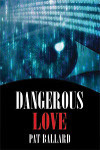 For as long as I can remember, I’ve always written. Since my teens I’ve known that I wanted to write romance novels with a motivational message—but I just couldn’t come up with the message.
For as long as I can remember, I’ve always written. Since my teens I’ve known that I wanted to write romance novels with a motivational message—but I just couldn’t come up with the message.Then, after spending time accepting and learning to love my new body, and quickly becoming an activist in trying to educate people that “fat” isn’t a four-letter word, I realized that there were no larger sized women used as heroines. Anywhere.
Everywhere I looked there were all sizes of larger women walking hand-in-hand with their men, but they weren’t featured in movies, television shows, magazines or books.
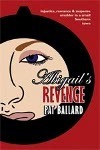 So finally, as I’ve said many times before, the proverbial light bulb went off over my head. I suddenly knew what my message was. I would write romance novels with Big Beautiful Heroines.
So finally, as I’ve said many times before, the proverbial light bulb went off over my head. I suddenly knew what my message was. I would write romance novels with Big Beautiful Heroines.I wanted my books to be an inspiration to any woman who had problems with her body, not just fat women. But I also knew that all sizes of women think they’re fat. We’ve all heard very small women complain because they think they’re fat.
For this reason, although I make it obvious that my heroines are big, I decided not to put a specific size on them. I wanted women of any and all sizes to read my books and be able to connect with their heroines.
I also know that most people have a mental limit about what size is “too big.” It’s really hard for us to shake that “too big” prejudice embedded in us, and I didn’t want anyone deciding that a heroine was “too fat” and therefore wouldn’t read the book.
 I turned down one publisher because she insisted that I put a size on my heroine in Wanted: One Groom
I turned down one publisher because she insisted that I put a size on my heroine in Wanted: One Groom , my first book—which I finally self-published along with three novels just so I could have my heroines the way I wanted them.
, my first book—which I finally self-published along with three novels just so I could have my heroines the way I wanted them.As a result I’ve had readers say, “Oh, I pictured Hanna Rockwell as looking like Trisha Yearwood when I was reading Wanted: One Groom
 . And someone said they pictured Nella Covington in
Nobody's Perfect
. And someone said they pictured Nella Covington in
Nobody's Perfect
 looking like Delta Burke. I’ve had others tell me they imagined themselves as the heroine as they read.
looking like Delta Burke. I’ve had others tell me they imagined themselves as the heroine as they read. 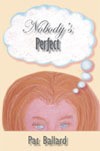 There are basically two kinds of large women. Some of us are very happy and secure in our big beautiful bodies, and have a healthy self-esteem. Then there are the women who are still buying into the hype that they can’t be beautiful, healthy and complete unless they weigh what our society says is acceptable.
There are basically two kinds of large women. Some of us are very happy and secure in our big beautiful bodies, and have a healthy self-esteem. Then there are the women who are still buying into the hype that they can’t be beautiful, healthy and complete unless they weigh what our society says is acceptable. For this reason, some of my heroines, like Nella Covington in Nobody's Perfect
 and Pamela Spencer in A Worthy Heir
and Pamela Spencer in A Worthy Heir , are totally happy with their bodies and show their books’ heroes that a woman can be sexy in a larger body.
, are totally happy with their bodies and show their books’ heroes that a woman can be sexy in a larger body.Then in other books, like His Brother's Child
 , the heroine, Faith Carr, is insecure about her size but the hero likes larger women, so she learns to love her body.
, the heroine, Faith Carr, is insecure about her size but the hero likes larger women, so she learns to love her body.
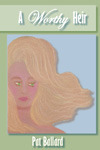

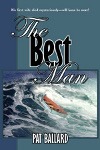
The Best Man
 starts out with Lana Clarke throwing her latest diet in the trash along with her scales, then taking the wastebasket outside and emptying it in the dumpster. She spends the rest of the book learning to accept her “growing” body and at times arguing with her sister, who wants her to stay slim for the sister’s wedding.
starts out with Lana Clarke throwing her latest diet in the trash along with her scales, then taking the wastebasket outside and emptying it in the dumpster. She spends the rest of the book learning to accept her “growing” body and at times arguing with her sister, who wants her to stay slim for the sister’s wedding.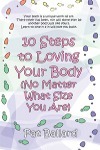 But at the end of my books all my heroines are happy with the bodies they have. My heroines have never, nor will they ever, go on diets to lose weight.
But at the end of my books all my heroines are happy with the bodies they have. My heroines have never, nor will they ever, go on diets to lose weight.Pearlsong Press now publishes all of my books in print and ebook form. I also have a non-fiction book, 10 Steps to Loving Your Body (No Matter What Size You Are)
 .
.
Published on June 12, 2012 06:00
June 11, 2012
Healing the World One Book at a Time – Prejudice in Publishing
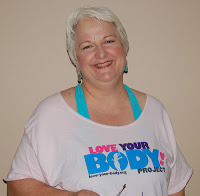 We start Pearlsong Press Week with a guest post from Pearlsong Press publisher Peggy Elam. Peggy is a licensed psychologist, healer, journalist, poet, artist and founder of Pearlsong Press. She lives in and works out of Nashville, TN.
We start Pearlsong Press Week with a guest post from Pearlsong Press publisher Peggy Elam. Peggy is a licensed psychologist, healer, journalist, poet, artist and founder of Pearlsong Press. She lives in and works out of Nashville, TN.Comment on this post for a chance to win a copy of the Pearlsong Press ebook of your choice. A winner will be chosen randomly from comments made on this post. This offer is valid until midnight EST, Tuesday June 19, 2012.

Pearlsong Press website: http://www.pearlsong.comPearlsong Press blog: http://www.pearlsongpress.com
Healing the World One Book at a Time – Prejudice in Publishingby Peggy Elam
When Glenn A. Gaesser was trying to get his first book published in the early 1990s, the main thing prospective agents and publishers wanted to know was whether he was fat.
 Big Fat Lies: The Truth About Your Weight and Your Health
Big Fat Lies: The Truth About Your Weight and Your Health
 documented the problems with focusing on weight as a proxy for health, including the unscientific way in which an insurance company actuary created the first height-weight tables. Its author (Gaesser) is a college professor and researcher in exercise and health promotion with a Ph.D. and M.A. from U.C. Berkeley—certainly well-qualified to report and discuss research on weight and health. But Gaesser’s credentials would have meant nothing to those agents and publishers if he were fat.
documented the problems with focusing on weight as a proxy for health, including the unscientific way in which an insurance company actuary created the first height-weight tables. Its author (Gaesser) is a college professor and researcher in exercise and health promotion with a Ph.D. and M.A. from U.C. Berkeley—certainly well-qualified to report and discuss research on weight and health. But Gaesser’s credentials would have meant nothing to those agents and publishers if he were fat.He wasn’t fat, though, and thus he was eventually offered a book contract—as long as he added a weight-loss-oriented section, which the publisher thought would make the book more popular. He agreed to do so (even though the weight-loss focus was contraindicated by the rest of the book) in order to get the information in the first two-thirds of the book, his original manuscript, published. I’ve recommended Big Fat Lies
 to many people since it was first published in 1996, but I always tell them to ignore that last section.
to many people since it was first published in 1996, but I always tell them to ignore that last section.It was several years after the publication of Big Fat Lies
 that I heard Gaesser tell how he was screened for body acceptability by the publishing industry. And I was incensed.
that I heard Gaesser tell how he was screened for body acceptability by the publishing industry. And I was incensed. I was (and still am) a clinical psychologist, but before earning my own Ph.D. and M.S. I had majored in English and journalism and worked a few years as a newspaper reporter, editor and columnist. I’d had my own struggles with weight, body image and eating, and was drawn to graduate study in psychology and training as a psychotherapist in part by interest in the relationship between dieting and eating disorders, as well as the way body and beauty standards bind and deaden women’s (and increasingly men’s) life energy.
I already knew there was a dearth of positive portrayals of fat people—especially fat women—in contemporary literature. Now it seemed that mainstream publishing culture deemed fat bodies unacceptable as authors as well, if they dared to write nonfiction discouraging weight prejudice. (A delightful exception was the 1998 publication of Marilyn Wann’s FAT!SO? : Because You Don't Have to Apologize for Your Size
 by the independent publisher Ten Speed Press. But Ten Speed Press is now owned by Random House.)
by the independent publisher Ten Speed Press. But Ten Speed Press is now owned by Random House.)After learning of the prejudice against fat nonfiction authors, I saw a way to combine my expertise and skills by creating a publishing company that would depict fat people positively as well as provide a possible outlet for authors of any size whose works challenge the weightist status quo. And Pearlsong Press was born.
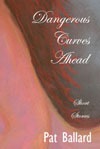 Our inaugural book was Pat Ballard’scollection of rubenesque short stories, Dangerous Curves Ahead: Short Stories
Our inaugural book was Pat Ballard’scollection of rubenesque short stories, Dangerous Curves Ahead: Short Stories , which debuted in trade paperback and ebook form in May 2004. We then published romance novels Pat had previously self-published (Wanted: One Groom
, which debuted in trade paperback and ebook form in May 2004. We then published romance novels Pat had previously self-published (Wanted: One Groom , Nobody's Perfect
, Nobody's Perfect , His Brother's Child
, His Brother's Child and A Worthy Heir
and A Worthy Heir ). Pat’s books were soon followed by Pattie Thomas and Carl Wilkerson’ssociological memoir
Taking Up Space: How Eating Well and Exercising Regularly Changed My Life
). Pat’s books were soon followed by Pattie Thomas and Carl Wilkerson’ssociological memoir
Taking Up Space: How Eating Well and Exercising Regularly Changed My Life
 (a bit of a culture jam, that subtitle, since the change was for the worse) and Ellen Frankel’s Beyond Measure: A Memoir About Short Stature and Inner Growth
(a bit of a culture jam, that subtitle, since the change was for the worse) and Ellen Frankel’s Beyond Measure: A Memoir About Short Stature and Inner Growth .
.Although it might seem odd—or frivolous—for the first books we published to be romance novels, I was and still am appreciative of the way in which fiction can fuel societal change. I have been touched by fans who have read Pat Ballard’s novels and written her that the books provided their first encounter with the notion that they could be happy and loved—not to mention healthy—in bodies they had long felt unacceptably fat.

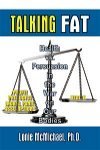

Pearlsong published its 32nd book this month: ExtraOrdinary: An End of Life Story Without End
 by Michele Tamaren and Michael Wittner, which garnered a glowing review from Publisher’s Weekly. August 2012 will see publication of Lonie McMichael, Ph.D’s
Talking Fat: Health vs. Persuasion in theWar on Our Bodies
, which Marilyn Wann calls a “brilliant analysis” that “will be endlessly useful to me as a fat activist and a person who wants to live healthily and happily in my very own body.”
by Michele Tamaren and Michael Wittner, which garnered a glowing review from Publisher’s Weekly. August 2012 will see publication of Lonie McMichael, Ph.D’s
Talking Fat: Health vs. Persuasion in theWar on Our Bodies
, which Marilyn Wann calls a “brilliant analysis” that “will be endlessly useful to me as a fat activist and a person who wants to live healthily and happily in my very own body.” In October we’ll publish Louise Mathewson’spoetry collection A Life Interrupted:Living With Brain Injury , which the journal therapy community is already buzzing about. And in November the world can take a break from holiday-eating-related fat panic to step into the hearty, guilt-free world of Tracey L. Thompson’s novel Fatropolis.
More books are under contract and in the pipeline, including the rest of Lynne Murray’s series featuring Josephine Fuller, the sleuth of size who doesn’t apologize, and a new novel by Judy Bagshaw.
As we move through the rest of 2012 and beyond, please join us in celebrating size (and age and spiritual) diversity and taking a larger perspective on life, the universe, and everything.
Published on June 11, 2012 06:00



